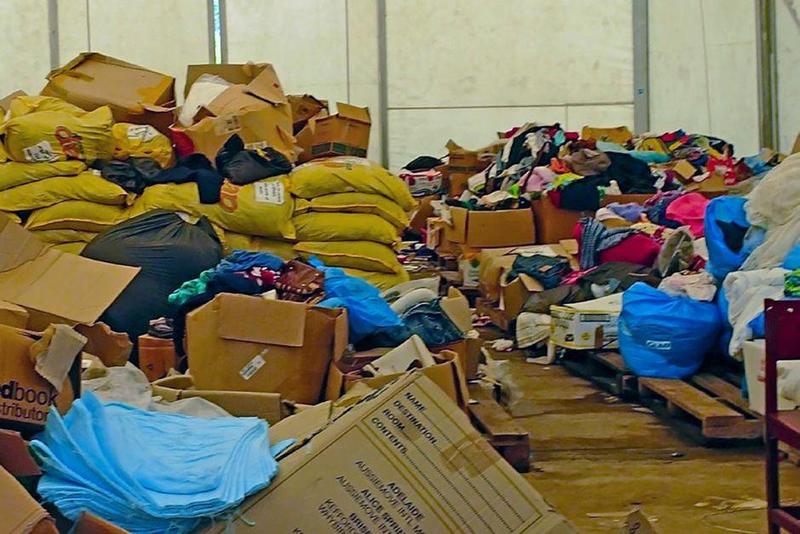What Really Happens to Donations After a Disaster

In many disasters, people lose their homes and livelihoods. As a result, others want to help and donate whatever they can, including flashlights, warm clothes, blankets, bottled water, canned food and toys.
But authorities report that a majority of the donations they receive aren’t needed, so what happens to these items? Let’s take a look at the effects of mass donations, what not to donate after a disaster and what you can do to truly help.
Not All Good Intentions Are Good Ideas
The world is susceptible to disasters. For instance, Hurricane Harvey wreaked havoc in Texas and Louisiana, resulting in severe flooding and countless deaths. In 2011, an earthquake and tsunami caused catastrophic damage in Japan, leading to thousands of deaths and missing persons. People affected by the disasters lost everything, compelling others around the world to send all types of donations.

However, these heartfelt gestures may do more harm than good. Donations are often left rotting in warehouses or overwhelming local landscapes. Mass donations negatively impact locals, recovery efforts and even the environment. Also, picture the massive carbon footprint created by the planes, ships, trains and trucks used to transport the items.
When people are suffering, grief and empathy move others to take action by sending as many donations as they can. But in reality, these items just cause a second disaster.
“Generally after a disaster, people with loving intentions donate things that cannot be used in a disaster response, and in fact may actually be harmful. And they have no idea that they’re doing it,” explains Juanita Rilling, former director of the Center for International Disaster Information in Washington, D.C.
The Worst Things to Donate
Clothes: It’s natural to believe that those who’ve lost everything must need clothes. But the U.S. Federal Emergency Management Agency (FEMA) calls clothing one of the least useful donations for disaster relief. Most clothes are just left rotting on roadsides, in warehouses and even on plane runways.

Rilling recalls speaking with a logistics expert when a plane with supplies couldn’t land because clothes were blocking the runway in Honduras. “It’s in boxes and bales. It takes up yards of space. It can’t be moved. ‘Whose clothing is it?’ He said, ‘Well, I don’t know whose it is, but there’s a high-heeled shoe, just one, and a bale of winter coats.’ And I thought, winter coats? It’s summer in Honduras,” she said.
Huge donations of clothes also hurt Florida in 1992, when Category 5 Hurricane Andrew destroyed the state. The damaged streets and highways made it impossible to transport the donations. As a result, the clothes were dumped on the sides of the roads, mutating into smelly, wet mush throughout Florida.
Blankets: After a disaster strikes, a big, warm blanket sounds like a comforting donation. In reality, it could become a hindrance to cleanup efforts. For instance, after Japan was devastated in 2011 by a violent earthquake, relief workers complained about “too many blankets” and “too many clothes” delaying recovery work.
Toys: In times of tragedy afflicting children, people think toys will lift families up. However, toys aren’t helpful at all. In 2012, a mass shooting ravaged Sandy Hook Elementary School and the entire town of Newtown, Connecticut. People sent the school about 67,000 teddy bears and thousands of school supplies, bicycles, sleds and toys.
The donations were thoughtful, but locals believe the town needed better support and resources. Matt Cole, a community vigil organizer, responded, “A teddy bear is wonderful, but a teddy bear can’t pay for counseling, a teddy bear can’t pay for a funeral.”
Food and Water: Even sending canned food and bottles of water isn’t a good idea. Each item must be examined and sorted when it reaches the destination. This takes up valuable time during relief efforts. It’s also extremely expensive.
Donating 100,000 liters (26,417 gallons) of water allows 40,000 people to drink water for one day. However, this type of donation is costly if it’s sent to a different country. According to Rilling, “This amount of water to send from the United States, say, to West Africa — and people did this — costs about $300,000. But relief organizations with portable water purification units can produce the same amount, 100,000 liters of water, for about $300.”
The Best Things to Donate
Money: Experts highly encourage financial contributions as donations; even a small donation can help tremendously. It’s best to send cash to accredited organizations so the donation doesn’t end up in the wrong hands.

Charity Navigator is a great place with which to check the legitimacy of charitable organizations. The company assesses the financial statements of the charities and rates them. For instance, it’s evaluated the American Red Cross, GlobalGiving, Americares and All Hands and Hearts. The site also reviews food banks and shelters.
Other Options: If you don’t have a lot of items to donate, consider having a garage sale and donating the profits. Experts also suggest volunteering at local charities in the event of a disaster.





